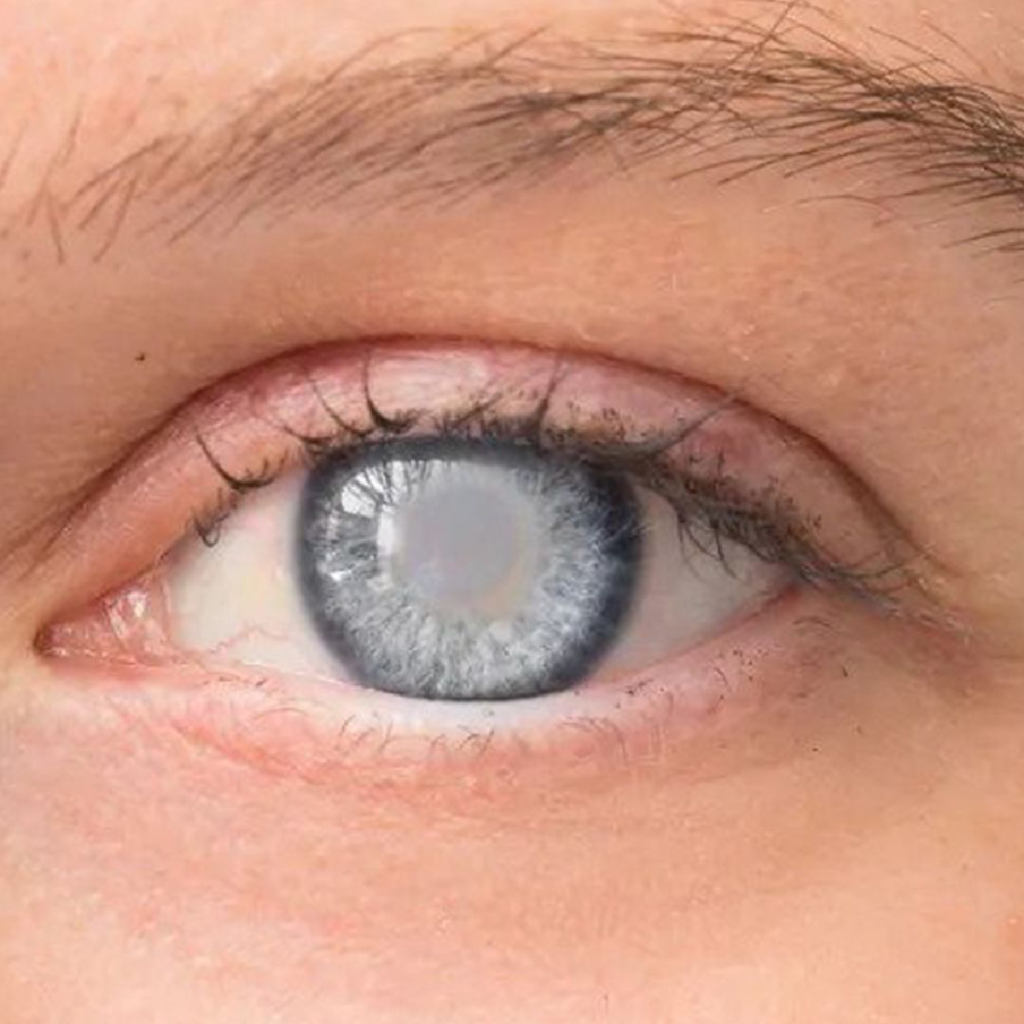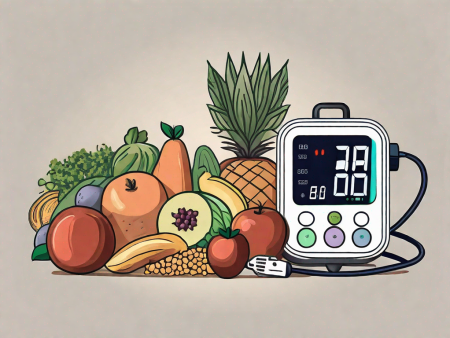Discover the signs of glaucoma and learn effective treatment options in this informative article.
Signs of Glaucoma and How to Treat It
Glaucoma is a sneaky little devil. It’s like that one friend who always manages to surprise you with unexpected tricks. You know, the kind of friend who hides behind corners and jumps out to scare you. Yep, that’s glaucoma for you. But fear not! In this article, we will dive deep into the world of glaucoma, unraveling its secrets, and discovering how to treat it like a boss.

Understanding Glaucoma
So, what exactly is glaucoma? Well, my friend, it’s not just your average eye condition. Glaucoma is a serious disease that affects the optic nerve, the lifeline that connects your eye to your brain. It’s like trying to have a phone conversation with a severed telephone wire – it just doesn’t work.
Glaucoma is a complex and multifaceted condition that requires a deeper understanding. Let’s dive into the intricacies of this stealthy thief that slowly steals your vision without you even noticing. It’s like that sneaky pickpocket who swipes your wallet without you feeling a thing. Sneaky, huh?
This thief damages the optic nerve, often due to increased pressure in the eye. Imagine a delicate balance disrupted, like a tightrope walker losing their footing. The result? Gradual vision loss, starting from the side and working its way towards the center. Not cool, glaucoma. Not cool.
What is Glaucoma?
Glaucoma, my friend, is not to be underestimated. It’s not just a mere inconvenience – it’s a silent threat lurking in the shadows. This condition can manifest in various forms, such as open-angle glaucoma, angle-closure glaucoma, normal-tension glaucoma, and congenital glaucoma. Each form presents its own challenges and requires specific treatment approaches.
Open-angle glaucoma, the most common type, develops gradually and often goes unnoticed until significant damage has occurred. Angle-closure glaucoma, on the other hand, can strike suddenly, causing severe eye pain, blurred vision, and even nausea. Normal-tension glaucoma is a perplexing variant where optic nerve damage occurs despite normal eye pressure. Lastly, congenital glaucoma affects infants and requires immediate medical attention to prevent irreversible vision loss.
Understanding the different types of glaucoma is crucial in developing effective treatment plans and managing the condition. It’s like deciphering the intricate patterns of a complex puzzle, piecing together the best approach to preserve your precious vision.
The Importance of Early Detection
Now, we all know that prevention is better than cure. And when it comes to glaucoma, early detection is key! Just like catching the thief before they run off with your priceless family heirloom, identifying glaucoma in its early stages can make all the difference.
Regular eye exams are your shield against the stealthy advances of glaucoma. These exams can help detect glaucoma before it wreaks havoc on your sight. Imagine it as a vigilant security guard, constantly monitoring your eyes for any signs of trouble. With early detection, you have the opportunity to intervene and implement appropriate treatments to slow down the progression of the disease.
But it’s not just about detecting glaucoma early; it’s also about raising awareness. Educating yourself and others about the risk factors, symptoms, and importance of regular eye exams can empower individuals to take control of their eye health.
So, my friend, let’s spread the word about glaucoma and its cunning ways. Together, we can shine a light on this silent thief and protect the precious gift of sight.
Recognizing the Signs of Glaucoma
Alright, folks, it’s time to put on our detective hats and start recognizing the warning signs. Remember, it’s better to be safe than sorry! So, what are the common symptoms that might point to glaucoma lurking in the shadows?
Common Symptoms
Here’s the scoop – glaucoma might not show any symptoms in its early stages. Yep, it’s like a silent ninja creeping up on you. But as the disease progresses, you might start experiencing some warning signs. These can include blurry vision, patchy spots in your visual field, and even rainbow-colored halos around lights. Talk about a psychedelic experience, huh? Don’t ignore these signs, my friend – they might just be glaucoma’s way of saying, “Hey, I’m here!”
Let’s dive a little deeper into these symptoms, shall we? Blurry vision is one of the most common signs of glaucoma. It’s like looking through a foggy window, where everything appears hazy and unclear. Imagine trying to read a book or drive a car with blurry vision – not an ideal situation, right?
Now, let’s talk about those patchy spots in your visual field. Picture this: you’re looking at a beautiful landscape, but there are missing pieces in the puzzle. It’s like someone took an eraser and wiped out parts of your vision. These patchy spots can make it difficult to see objects clearly and can even affect your depth perception.
And what about those rainbow-colored halos around lights? It’s like stepping into a magical world where streetlights and headlights transform into vibrant, shimmering rings of color. While it may seem enchanting, it’s actually a sign that something is amiss with your eyes. These halos can make it challenging to see objects in low-light conditions and can be quite distracting.
So, if you notice any of these symptoms, don’t brush them off as mere coincidences. They could be early warning signs of glaucoma, and it’s crucial to seek medical attention to prevent further damage to your vision.
Risk Factors for Glaucoma
Now, let’s talk about the culprits, shall we? Turns out, some folks are more prone to glaucoma than others. If you fall into one or more of these risk categories, it’s time to be extra vigilant. Age, family history, high eye pressure, and certain medical conditions like diabetes and hypertension can increase your chances of having glaucoma. Consider this your red alert, my friend!
Age plays a significant role in the development of glaucoma. As we get older, our risk of developing the disease increases. So, if you’re in your golden years, it’s essential to keep a close eye on your eye health (pun intended).
Family history also plays a part in glaucoma. If you have close relatives who have been diagnosed with the disease, your risk of developing it is higher. It’s like a genetic baton being passed down from one generation to another, urging you to be proactive in monitoring your eye health.
High eye pressure, also known as intraocular pressure, is another risk factor for glaucoma. When the pressure inside your eyes becomes elevated, it can damage the optic nerve, leading to vision loss. Regular eye exams can help detect and monitor your eye pressure, ensuring early intervention if necessary.
Medical conditions like diabetes and hypertension can also increase your chances of developing glaucoma. These conditions can affect the blood vessels in your eyes, compromising the overall health of your eyes and increasing the risk of glaucoma. Managing these underlying conditions is crucial to maintaining good eye health.
So, if you find yourself falling into any of these risk categories, don’t panic. Knowledge is power, and being aware of your risk factors can help you take proactive steps to protect your vision. Regular eye exams, a healthy lifestyle, and open communication with your eye care professional are key to keeping glaucoma at bay.
Diagnostic Procedures for Glaucoma
Alright, time to get down to business and figure out if glaucoma has set up camp in your peepers.
Comprehensive Eye Exam
First things first – you’ll need a comprehensive eye exam. This isn’t just your regular eye chart test – this is the big league. During this exam, your eye doctor will check your eye pressure, examine your optic nerve, and assess your nerve fiber thickness. It’s like going through airport security, but for your eyes. Don’t worry, though – no need to take off your shoes!
But what exactly happens during a comprehensive eye exam? Well, let me break it down for you. The eye doctor will start by dilating your pupils using special eye drops. This allows them to get a better view of the structures inside your eyes. Once your pupils are nice and dilated, the doctor will use a tonometer to measure your eye pressure. This is a painless procedure that helps determine if you have high intraocular pressure, which is a common sign of glaucoma.
Next, the doctor will examine your optic nerve using a special instrument called an ophthalmoscope. They will carefully inspect the color, shape, and size of your optic nerve head to look for any signs of damage or abnormalities. This part of the exam is crucial because glaucoma often causes damage to the optic nerve, which can lead to vision loss if left untreated.
Lastly, the doctor will use a technique called optical coherence tomography (OCT) to assess the thickness of your nerve fibers. This non-invasive imaging test provides detailed cross-sectional images of the retina, allowing the doctor to evaluate the health of your nerve fibers. By analyzing the thickness of these fibers, the doctor can determine if there is any damage caused by glaucoma.
Advanced Diagnostic Tests
If the comprehensive eye exam raises suspicion, your eye doctor might want to dig deeper. They have some fancy tech tools up their sleeves, trust me. Tests like visual field testing, gonioscopy, and pachymetry can provide a detailed look at what’s really going on inside those peepers. It’s like using a magnifying glass to investigate a mysterious crime scene. The truth will be revealed!
Visual field testing is a procedure that measures your peripheral vision. It helps the doctor determine if there are any blind spots or areas of reduced vision, which can be indicative of glaucoma. During this test, you’ll be asked to focus on a central point while small lights flash in your peripheral vision. You’ll need to press a button whenever you see a light, allowing the doctor to create a map of your visual field.
Gonioscopy, on the other hand, is a technique used to examine the drainage angle of your eye. This is the area where fluid drains out of the eye. By using a special lens, the doctor can visualize the angle and determine if it’s open or closed. This information is crucial in diagnosing different types of glaucoma and determining the best treatment approach.
Pachymetry, another advanced diagnostic test, measures the thickness of your cornea. This is important because the thickness of your cornea can affect the accuracy of your intraocular pressure readings. By knowing your corneal thickness, the doctor can make more accurate assessments of your eye pressure and adjust your treatment plan accordingly.
So, as you can see, diagnosing glaucoma is not a simple task. It requires a combination of comprehensive eye exams and advanced diagnostic tests to get a clear picture of what’s happening inside your eyes. But fear not, with the help of modern technology and skilled eye doctors, glaucoma can be detected early and managed effectively to preserve your precious vision.
Treatment Options for Glaucoma
Ah, the moment we’ve all been waiting for – treatment options! So, how can we tackle this sneaky villain and protect our precious vision?
Medications for Glaucoma
First line of defense – medications! Eye drops are like the superheroes of the glaucoma world. They work by either reducing eye pressure or improving fluid drainage. It’s like giving your eyes a spa treatment – except instead of cucumbers, you’re using eye drops. Cool, huh? Just make sure to follow your eye doctor’s instructions and put those drops to good use.
Surgical Procedures
If medications don’t do the trick, it might be time to bring out the big guns – surgical procedures. There are different options to choose from, like laser therapy or traditional surgery. It’s like arming yourself with a glaucoma-fighting army. These procedures aim to improve fluid drainage or reduce fluid production, giving glaucoma a one-two punch. Take that, glaucoma!
Living with Glaucoma
Now that we’ve covered the nitty-gritty of glaucoma, it’s time to discuss how to live your best life with this condition. Remember, glaucoma doesn’t define you – it’s just a minor inconvenience in the grand scheme of things.

Lifestyle Changes
You might need to make some adjustments to your daily routine, but hey, who doesn’t love a challenge? Eating a healthy diet, exercising regularly, and avoiding smoking can all help keep glaucoma at bay. It’s like giving glaucoma a taste of its own medicine – a healthy lifestyle!
Regular Check-ups and Monitoring
Lastly, don’t forget to schedule those regular check-ups with your eye doctor. Monitoring your eye pressure and overall eye health is crucial to keeping glaucoma in check. It’s like having a trusty sidekick – your eye doctor – to watch your back and keep glaucoma on the run.
In Conclusion
So, there you have it – the lowdown on glaucoma and how to slay that silent thief. Remember, early detection is key, so make sure to stay vigilant and listen to your peepers. Glaucoma might be sneaky, but armed with knowledge and the right treatment, you’ll be able to shout, “Not today, glaucoma!”






